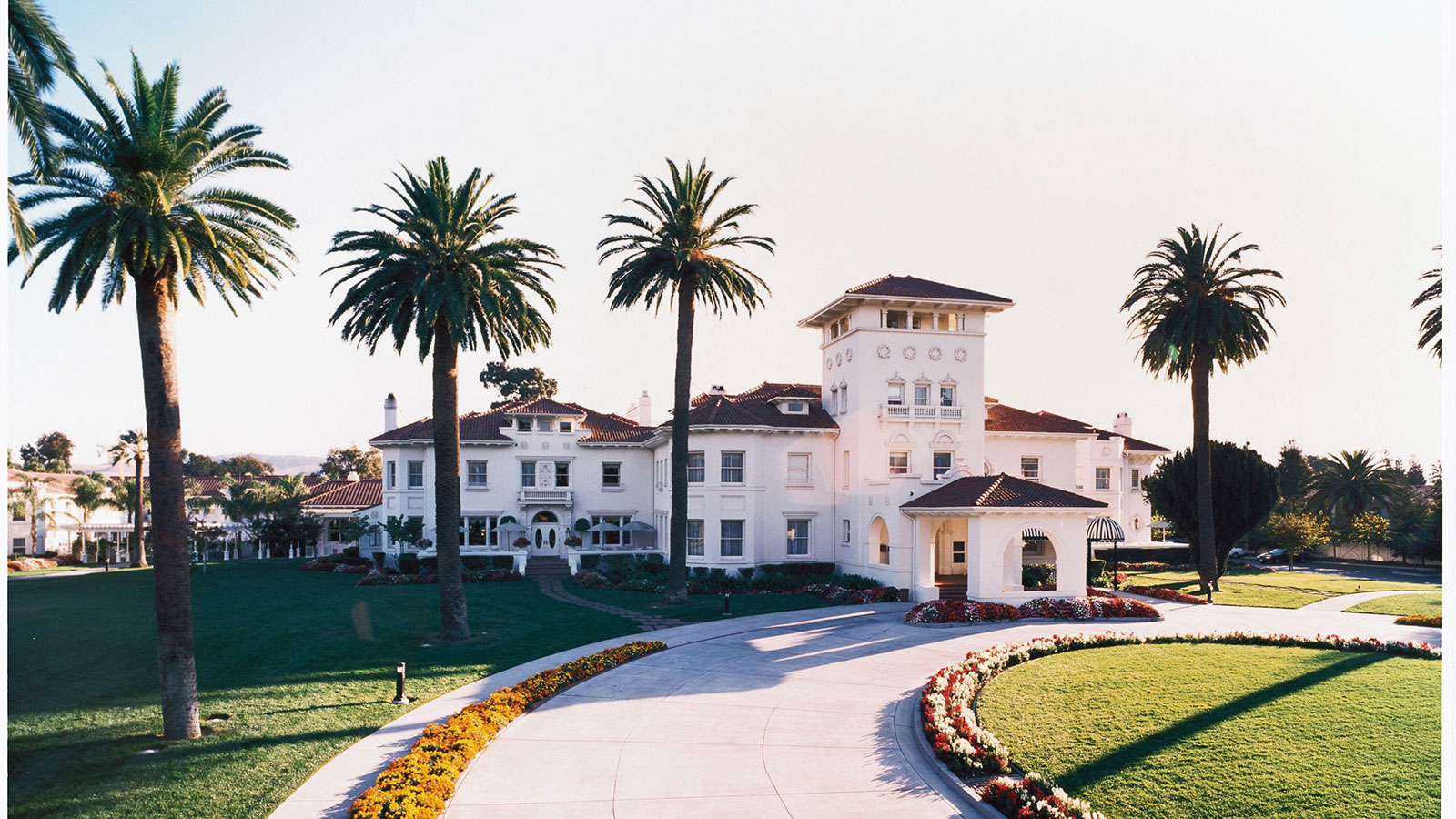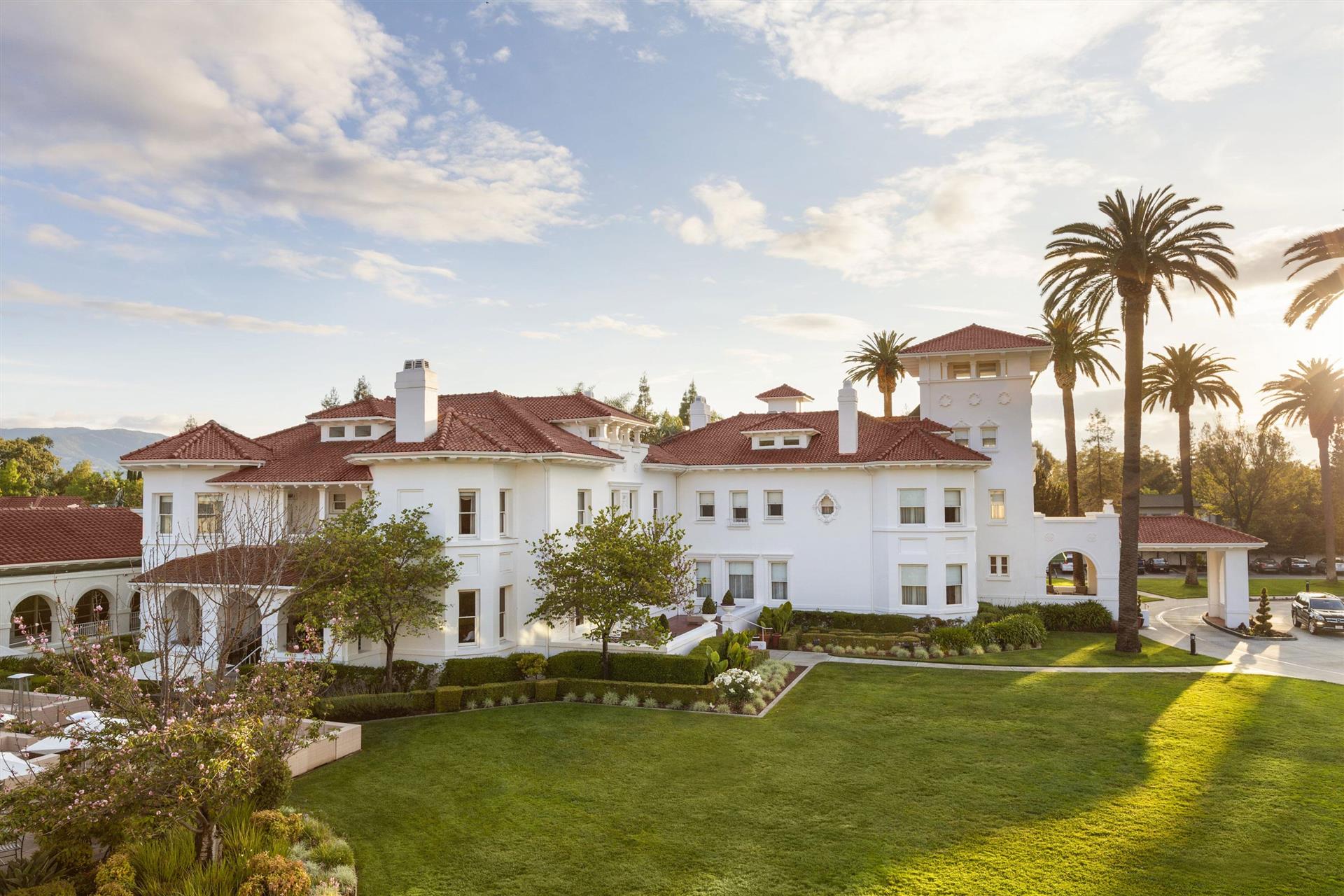Receive for Free - Discover & Explore eNewsletter monthly with advance notice of special offers, packages, and insider savings from 10% - 30% off Best Available Rates at selected hotels.
history
Discover Hayes Mansion San Jose, Curio Collection by Hilton, which was once the residence of the influential Hayes family.
Hayes Mansion San Jose, Curio Collection by Hilton, a member of Historic Hotels of America since 2019, dates back to 1905.
VIEW TIMELINEListed on the U.S. National Register of Historic Places, the Hayes Mansion San Jose, Curio Collection by Hilton, can trace its heritage back to the prominent Hayes family. Led by matriarch Mary Hayes Chynoweth, the Hayes’ became wealthy through their iron ore mining ventures across the Midwest during the Gilded Age. Using their newfound affluence, the family relocated to San Jose, California, which was then just starting to emerge as a major American metropolis. Chynoweth herself oversaw the family’s relocation, purchasing some 239 acres of farmland on the outskirts of the city from Frederick Tennant. Her family subsequently oversaw the creation of a massive English Baroque-inspired mansion, which measured a total of 22,000 square feet. It featured more than two dozen rooms, and even had an attending orchard! Unfortunately, the beautiful estate burned to the ground amid the outbreak of a terrible fire in 1889. Undeterred, Chynoweth endeavored to build a grander structure as a replacement. She specifically commissioned architect George Page to spearhead its design, who gradually developed a building plan that synthesized aspects of both Mediterranean and Spanish Colonial Revivalism. His blueprint proved to be incredibly imaginative, as the building’s entire floorplan was crafted to resemble a huge Maltese Cross. But Page also crafted the mansion to be even larger than its predecessor, since Chynoweth intended for the growing families of her two sons—Everis Hayes and Jay Orly Hayes—to live inside with her. As such, Page created a sprawling 41,000 square-foot palace that had complete separate wings for Chynoweth’s children and grandchildren. Page even made the building self-sufficient, for it was equipped with its own power plant, post office, and chapel.
Construction began in 1903 and lasted for a total of two years. The building was an engineering masterpiece, for it featured imported marbles and exotic woods, along with ornate, stained-glass windows. Spectacular stucco tiling lined the exterior walls, while a durable double layer of brick formed the skeleton. Each one of the mansion’s new 64 rooms displayed their own unique finishes, especially the structure’s loggia and solarium. It also contained cutting-edge architectural innovations like the latest fire safety features of the day. Perhaps the most impressive were the fire hose cabinets connected to water tanks on the third floor, as well as the separate kitchen that the staff could only reach via a conservatory. Work on the new home concluded just in time for Thanksgiving in 1905. Sadly, Chynoweth herself did not get to enjoy the new mansion, as she had died just a few months prior. Nevertheless, her two sons and their families benefited greatly from the Hayes Mansion over the following decades. Indeed, both sons went on to help develop the Santa Clara Valley fruit industry and found the prominent San Jose Mercury News. But the Hayes family eventually sold the estate during the 1960s, after which the building remained vacant for some time. Purchased by the City of San Jose four decades later, the building was completely renovated and expanded to its present state. A member of Historic Hotels of America since 2019, this fantastic structure operates today as a wonderful boutique hotel called the “Hayes Mansion San Jose, Curio Collection by Hilton.” Its impressive luxury and amazing hospitality had since made it one of California’s most preeminent holiday destinations.
-
About the Location +
Situated within the Santa Clara Valley, San Jose is among California’s most prominent metropolitan areas. The community is currently the state’s third largest city, ranked only behind Los Angeles and San Diego. Its history is also very fascinating, dating back to the arrival of the Spanish in the late 18th century. (Although the Ohlone Native Americans had long occupied the region beforehand, it was the Spanish who established the nucleus of modern-day San Jose.) In 1776, King Carlos III of Spain organized an expedition to establish permanent colonial settlements along California’s shoreline. Led by Juan Bautista de Anza, the group gradually explored the coast in search of potential places for military forts, religious missions, and even towns. The primary location that the adventurers hoped to investigate was the San Francisco Bay area and its surrounding environs. Upon choosing several sites for the future El Presidio Real de San Francisco, de Anza’s group sailed back toward their starting point in Mexico. But before leaving the region entirely, the explorers looked around the mouth of the Santa Clara River and decided it was perfect for a future civilian settlement. Settlers from New Spain eventually returned several years later and founded the community of “Pueblo de San José de Guadalupé.” The residents felt the title was appropriate, as the town’s namesake—Saint Joseph—was a spiritual patron for Spanish pioneers. The town subsequently emerged as one of the most important settlements in the region, becoming a central waypoint along California’s main road, the El Camino Real. Part of its strategic importance involved its robust agricultural economy, which provided produce and livestock to the individuals who frequented the route.
San Jose remained a central settlement in California, even after the entire province transitioned into a Mexican state following the Mexico’s independence. Indeed, its agricultural surplus continued to supply travelers, as well as nearby communities all over the San Francisco Bay area. San Jose’s influence grew even further in the wake of the Mexican-American War of the late 1840s. Now a part of the United States as the “City of San Jose,” the community was briefly elevated to the status of California’s capital for a few years. San Jose preserved its political importance once the state legislature left due to the strength of its local economy. While farming and ranching remained San Jose’s economic bedrock, additional industries like mining and food processing were also prosperous. In fact, some of America’s most successful packers were based in San Jose, such as the Bayside Canning Company. But the character of San Jose’s economy changed considerably during World War II, when a number of manufacturers opened up factories that produced various kinds of munitions for the war effort. This local industrial revolution catalyzed the development of several lucrative high-tech companies, as well, including the Fairchild Semiconductor Corporation and the Hewlett-Packard Company. San Jose attracted countless technological innovators over the next several decades, making the city the de facto center for America’s nascent tech industry. And with the rise of new industrial titans like Apple, many in America had quickly taken to calling San Jose the heart of the California’s mighty “Silicon Valley” by the end of the century. As such, San Jose today still remains one of the nation’s leading communities.
-
About the Architecture +
The Hayes Mansion San Jose, Curio Collection by Hilton, stands today as a brilliant example of California Mission Revival. An offshoot of the larger Spanish Colonial Revival-style, California Mission Revival first emerged in the United States during Gilded Age. The movement specifically enjoyed its greatest popularity from 1890 to 1915, although it continued to be used by architects well into the late 20th century. The California Mission Revival style of architecture—and subsequent Spanish Colonial Revival style—have a historical and cultural predominance in the southwestern United States, as it is a common sight throughout that region of the country. Franciscan monasteries constructed throughout California during the 1700s served as the primary source of inspiration for California Mission Revival-style architecture. In a manner reminiscent to those monasteries, buildings developed with California Mission Revival architecture embraced design principles that focused on necessity and security. As such, California Mission Revival-themed blueprints featured structures centered around an enclosed courtyard with massive adobe walls. The walls themselves had broad, unadorned stucco surfaces that contained limited fenestration, red clay tiling, and low-pitched roofing. Other prominent structural components to California Mission Revival-style buildings included an enfilade of interior spaces, semi-independent bell-gables, and curved “Baroque” gables installed on the primary façade. Many of these architectural components can still be seen throughout the Hayes Mansion today. In fact, the Hayes Mansion itself was designed to resemble a massive Maltese Cross!
But the Hayes Mansion also displays elements of displays an amazing array of Mediterranean Revival-style architecture. While most Revivalist forms typically mimicked one or two earlier architectural forms, Mediterranean Revival-style took its inspiration from several, including Italian Renaissance, Spanish Colonial, and French Beaux-Arts. The amalgamation of so many unique design principles into one singular form was born out of a desire to create exotic buildings that closely resembled the different kinds of historic palaces scattered throughout the Mediterranean basin. Mediterranean Revival-style typically relied on a regular, rectangular floorplan that featured grandiose, symmetrical façades. Stucco exterior walls and red-tile roofs were perhaps the greatest structural elements. Yet, American architects also incorporated wrought iron balconies into the overall design, as well as numerous keystones and arched windows with grilles. This building aesthetic first appeared in great popularity at the height of the Roaring Twenties, when hoteliers in places like Florida and California thought such an appearance would epitomize the tropical atmosphere of their respective states. They specifically believed the Mediterranean-inspired architect would significantly impress the throngs of tourists that had started to south and west as a means of escaping the harsh winters of the Northeast. Nevertheless, American architect began utilizing the form for many other building projects across the United States as it rose in popularity. Indeed, many affluent Americans—including the Hayes family—even used the style to construct their own personal homes.































